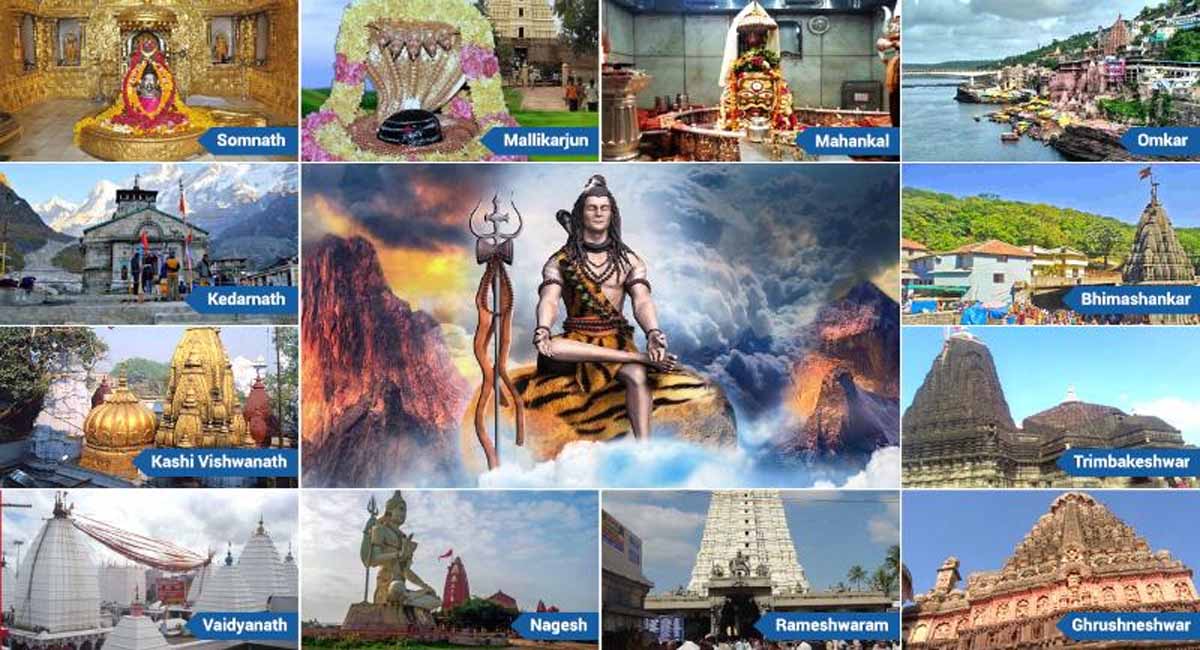Jyotirlinga Temples are considered the most sacred and significant shrines of Lord Shiva in Hinduism. The term “Jyotirlinga” is derived from the Sanskrit words “Jyoti” meaning radiance or light, and “linga” meaning symbol of Lord Shiva.
Lord Shiva is believed to have manifested himself in the form of a Jyotirlinga in 12 different places across India. These Jyotirlinga temples are considered to be very auspicious and powerful, and are visited by millions of devotees every year to seek blessings and perform worship.
Significance of Jyotirlinga Temples in Hinduism
The significance of Jyotirlinga temples in Hinduism is immense. They are believed to be a source of immense spiritual power and are considered to be the holiest shrines for Lord Shiva’s worship. It is believed that a visit to these temples can provide spiritual liberation and help in achieving the ultimate goal of life.
Brief History of Jyotirlinga Temples
The history of Jyotirlinga temples dates back to ancient times. These temples have been a center of spiritual and religious significance for centuries and have been patronized by various kings and emperors. Some of the Jyotirlinga temples have also been destroyed and rebuilt several times due to wars and natural disasters. Despite all the destruction and rebuilding, these temples have stood the test of time and continue to attract millions of devotees from all over the world.
The 12 JYOTIRLINGA TEMPLES
Somnath Temple, Gujarat

Somnath Temple is a Hindu temple located in the Prabhas Kshetra near Veraval in Saurashtra, Gujarat, India. It is dedicated to the god Shiva and is one of the twelve Jyotirlinga shrines, which are believed to be the most sacred abodes of Shiva.
The temple has a long and rich history, having been destroyed and rebuilt several times throughout its existence. The original temple is said to have been built by the moon god Soma in gold, then rebuilt by Ravana in silver, and again by Krishna in wood. The current structure dates back to the 1950s and is made of concrete and reinforced steel.
The temple is an important pilgrimage site for Hindus, and attracts thousands of visitors every year. It is also a popular tourist destination due to its historical significance and beautiful architecture. The temple complex includes several smaller shrines, a museum, and a light and sound show that tells the story of the temple’s history.
Mallikarjuna Temple, Andhra Pradesh

The Mallikarjuna Temple is a Hindu temple dedicated to the god Shiva and located in the town of Srisailam in the state of Andhra Pradesh, India. It is one of the twelve Jyotirlinga shrines, which are believed to be the most sacred abodes of Shiva.
The temple’s history can be traced back to the 2nd century, and it has been rebuilt and renovated several times over the centuries. The current structure was built in the 14th century by the kings of the Vijayanagara Empire and features intricate carvings and sculptures.
The temple complex is quite large and includes several smaller shrines and mandapams, or halls. One of the most notable features of the temple is its massive central tower, which stands at over 200 feet tall and is adorned with elaborate carvings and sculptures.
The Mallikarjuna Temple is an important pilgrimage site for Hindus, particularly those who worship Shiva. It attracts thousands of visitors every year and is known for its beautiful architecture and serene surroundings. In addition to its religious significance, the temple is also a popular tourist destination and a testament to the rich cultural heritage of India.
Mahakaleshwar Temple, Madhya Pradesh

The Mahakaleshwar Temple is a Hindu temple located in the ancient city of Ujjain in the state of Madhya Pradesh, India. It is dedicated to the god Shiva and is one of the twelve Jyotirlinga shrines, which are believed to be the most sacred abodes of Shiva.
The temple’s origins can be traced back to the 4th century BC, and it has been destroyed and rebuilt several times throughout its long history. The current structure dates back to the 18th century and is a beautiful example of Maratha architecture.
The temple complex is quite large and includes several smaller shrines and mandapams, or halls. One of the most notable features of the temple is its tall spire, which stands at over 150 feet tall and is adorned with intricate carvings and sculptures.
The Mahakaleshwar Temple is an important pilgrimage site for Hindus, and it attracts thousands of visitors every year. It is known for its spiritual significance, as well as its beautiful architecture and serene surroundings. The temple is also home to several annual festivals, including the Maha Shivaratri festival, which is celebrated with great fervor and attracts large crowds of devotees.
Omkareshwar Temple, Madhya Pradesh

The Omkareshwar Temple is a Hindu temple located in the town of Omkareshwar in the state of Madhya Pradesh, India. It is dedicated to the god Shiva and is considered to be one of the most sacred sites in Hinduism.
The temple is situated on an island in the Narmada River, and its origins can be traced back to ancient times. The current structure dates back to the 11th century and is a beautiful example of Hindu temple architecture.
The temple complex is quite large and includes several smaller shrines, mandapams, and courtyards. One of the most notable features of the temple is its tall spire, which stands at over 100 feet tall and is adorned with intricate carvings and sculptures.
The Omkareshwar Temple is an important pilgrimage site for Hindus, particularly those who worship Shiva. It attracts thousands of visitors every year, many of whom take part in the Narmada Parikrama, a pilgrimage that involves circumambulating the Narmada River and visiting its holy sites.
In addition to its religious significance, the temple is also a popular tourist destination and is known for its beautiful architecture and picturesque location on the banks of the Narmada River.
Kedarnath Temple, Uttarakhand
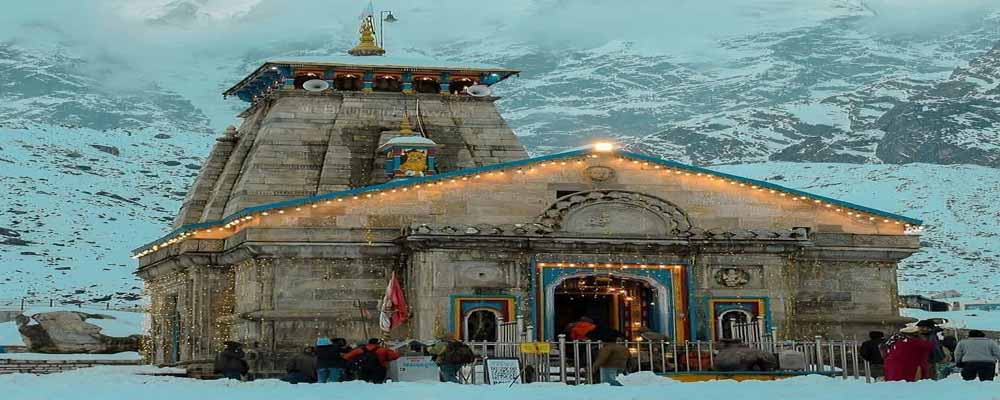
The Kedarnath Temple is a Hindu temple dedicated to the god Shiva and located in the town of Kedarnath in the state of Uttarakhand, India. It is one of the four Char Dham pilgrimage sites and is considered to be one of the most sacred temples in Hinduism.
The temple is situated at an altitude of over 11,000 feet in the Himalayan mountains, and its origins can be traced back to ancient times. The current structure dates back to the 8th century and is a beautiful example of Himalayan architecture.
The temple complex is quite large and includes several smaller shrines, mandapams, and courtyards. One of the most notable features of the temple is its tall spire, which stands at over 50 feet tall and is adorned with intricate carvings and sculptures.
The Kedarnath Temple is an important pilgrimage site for Hindus, particularly those who worship Shiva. It attracts thousands of visitors every year, many of whom undertake a difficult trek through the Himalayas to reach the temple. The temple is also the starting point for the Kedarnath yatra, a pilgrimage that involves visiting several other important shrines in the region.
In addition to its religious significance, the temple is also a popular tourist destination and is known for its beautiful architecture and stunning mountain views.
Bhimashankar Temple, Maharashtra

The Bhimashankar Temple is a Hindu temple located in the Sahyadri hills of Maharashtra, India. It is dedicated to the god Shiva and is one of the twelve Jyotirlinga shrines, which are believed to be the most sacred abodes of Shiva.
The temple’s origins can be traced back to ancient times, and the current structure was built in the 18th century by the Maratha ruler, Nana Phadnavis. It is a beautiful example of traditional Maharashtrian temple architecture.
The temple complex is quite large and includes several smaller shrines, mandapams, and courtyards. One of the most notable features of the temple is its tall spire, which stands at over 150 feet tall and is adorned with intricate carvings and sculptures.
The Bhimashankar Temple is an important pilgrimage site for Hindus, particularly those who worship Shiva. It attracts thousands of visitors every year and is known for its spiritual significance, as well as its beautiful architecture and serene surroundings.
The temple is also located within the Bhimashankar Wildlife Sanctuary, which is home to a variety of flora and fauna, including several endangered species. The sanctuary is a popular destination for nature lovers and trekkers, and the temple is often included in trekking routes in the region.
Vishwanath Temple, Uttar Pradesh

The Vishwanath Temple, also known as the Kashi Vishwanath Temple, is a Hindu temple located in the ancient city of Varanasi in the state of Uttar Pradesh, India. It is dedicated to the god Shiva and is one of the most sacred sites in Hinduism.
The temple’s origins can be traced back to ancient times, and the current structure was built in the 18th century by the Maratha ruler, Ahilyabai Holkar. It is a beautiful example of traditional North Indian temple architecture.
The temple complex is quite large and includes several smaller shrines, mandapams, and courtyards. One of the most notable features of the temple is its tall spire, which stands at over 200 feet tall and is adorned with intricate carvings and sculptures.
The Vishwanath Temple is an important pilgrimage site for Hindus, particularly those who worship Shiva. It attracts thousands of visitors every day and is known for its spiritual significance, as well as its beautiful architecture and vibrant atmosphere.
The temple is also located in the heart of Varanasi, a city known for its ancient history, rich culture, and vibrant spiritual traditions. Visitors to the temple can explore the narrow streets and alleys of the old city, take a boat ride on the Ganges River, and witness the city’s unique blend of ancient and modern traditions.
Trimbakeshwar Temple, Maharashtra

Trimbakeshwar Temple is a Hindu temple located in the town of Trimbak in the Nashik district of Maharashtra, India. It is dedicated to Lord Shiva and is one of the twelve Jyotirlingas, which are considered to be the most sacred abodes of Lord Shiva. The temple is situated at the source of the Godavari River and is believed to have been built by the Maratha ruler, Peshwa Nana Saheb.
The temple’s architecture is a blend of traditional Hindu and Muslim styles, with intricate carvings and beautiful sculptures adorning its walls. The main sanctum of the temple houses the lingam, or the symbolic representation of Lord Shiva, which is said to have self-manifested from the ground.
The Trimbakeshwar Temple is also famous for its Kumbh Mela, a Hindu festival that is held every twelve years in four different locations in India, including Trimbak. During this festival, millions of pilgrims from all over the world come to take a dip in the sacred Godavari River and seek the blessings of Lord Shiva.
The Trimbakeshwar Temple is a must-visit for anyone interested in Hindu mythology and architecture, and is a popular destination for both domestic and international tourists.
Baidyanath Temple, Jharkhand

Baidyanath Temple is a famous Hindu temple located in the town of Deoghar in the Indian state of Jharkhand. The temple is dedicated to Lord Shiva and is considered to be one of the twelve Jyotirlingas, which are believed to be the most sacred abodes of Lord Shiva. The temple is also known as Baba Baidyanath Dham or simply Baidyanath Dham.
The Baidyanath Temple complex consists of a main temple and 21 smaller temples. The main temple is a beautiful example of Hindu architecture, with intricate carvings and sculptures adorning its walls. The temple is also famous for its massive Shiva Lingam, which is believed to have been installed by Lord Rama himself.
The temple is visited by millions of pilgrims every year, especially during the month of Shravana (July-August), when the famous Shravani Mela is held. During this festival, pilgrims from all over India come to the temple to offer their prayers and seek blessings from Lord Shiva. The temple also has a rich history and is believed to have been visited by several great saints and scholars over the years.
The Baidyanath Temple is a must-visit for anyone interested in Hindu mythology and architecture, and is a popular destination for both domestic and international tourists.
Nageshwar Temple, Gujarat
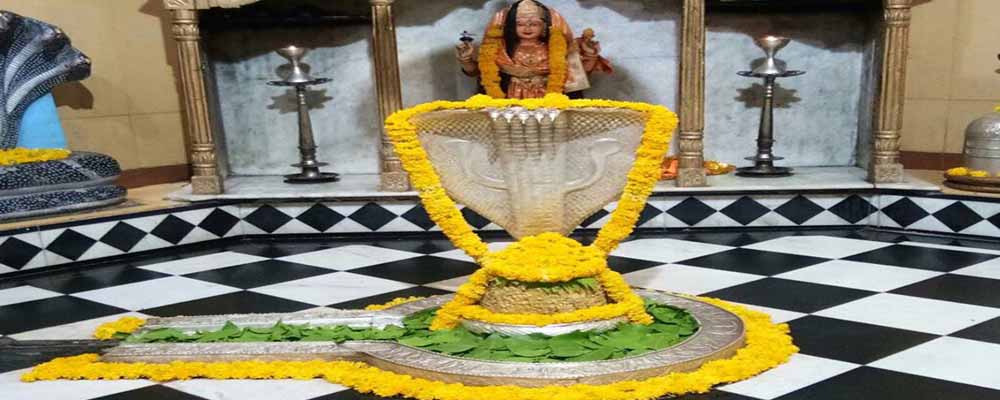
Nageshwar Temple is a famous Hindu temple located in the town of Dwarka in the Indian state of Gujarat. The temple is dedicated to Lord Shiva and is considered to be one of the twelve Jyotirlingas, which are believed to be the most sacred abodes of Lord Shiva. The temple is also known as Nagnath Temple.
The Nageshwar Temple is located near the coast of the Arabian Sea and is believed to have been built during the 8th century. The temple is known for its beautiful architecture, intricate carvings and sculptures, and serene surroundings.
The main sanctum of the temple houses a lingam, or the symbolic representation of Lord Shiva. The lingam is said to be one of the oldest in the country and is believed to have self-manifested from the ground.
The temple is visited by thousands of pilgrims every year, especially during the festival of Maha Shivaratri, when the temple is decorated with lights and devotees offer prayers and perform special rituals. The temple also has a rich history and is believed to have been visited by several great saints and scholars over the years.
The Nageshwar Temple is a must-visit for anyone interested in Hindu mythology and architecture, and is a popular destination for both domestic and international tourists.
Rameshwaram Temple, Tamil Nadu

Rameshwaram Temple is a famous Hindu temple located in the town of Rameswaram in the Indian state of Tamil Nadu. The temple is dedicated to Lord Shiva and is considered to be one of the twelve Jyotirlingas, which are believed to be the most sacred abodes of Lord Shiva. The temple is also known as Ramanathaswamy Temple.
The Rameshwaram Temple is located on Rameswaram Island and is believed to have been built during the 12th century. The temple is known for its magnificent architecture, intricate carvings and sculptures, and grandeur.
The main sanctum of the temple houses a lingam, or the symbolic representation of Lord Shiva. The temple also has 22 wells inside it, each of which is believed to have medicinal properties.
The temple is visited by millions of pilgrims every year, especially during the festival of Maha Shivaratri, when the temple is decorated with lights and devotees offer prayers and perform special rituals. The temple also has a unique significance in Hindu mythology as it is believed to be the place where Lord Rama built a bridge to reach Lanka, as described in the epic Ramayana.
The Rameshwaram Temple is a must-visit for anyone interested in Hindu mythology and architecture, and is a popular destination for both domestic and international tourists.
Grishneshwar Temple, Maharashtra
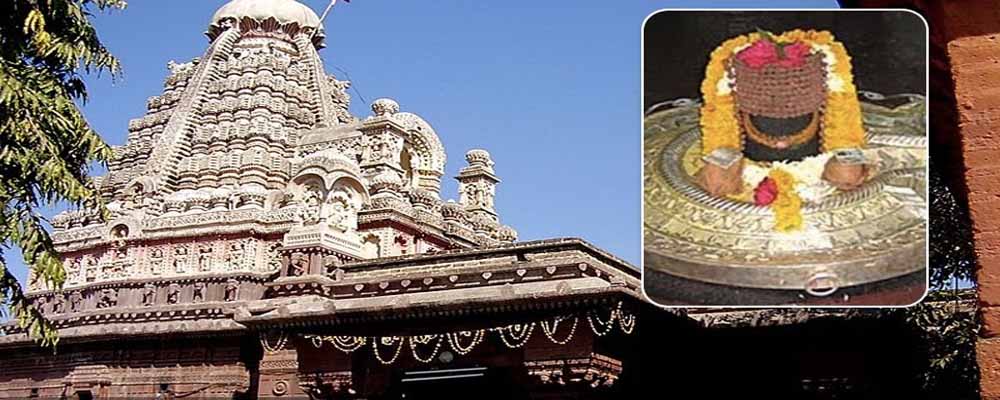
Grishneshwar Temple is a famous Hindu temple located in the town of Verul in the Indian state of Maharashtra. The temple is dedicated to Lord Shiva and is considered to be one of the twelve Jyotirlingas, which are believed to be the most sacred abodes of Lord Shiva. The temple is also known as Ghushmeshwar Temple.
The Grishneshwar Temple is believed to have been built during the 18th century and is known for its beautiful architecture, intricate carvings and sculptures, and peaceful surroundings. The temple is also surrounded by several other small temples and shrines.
The main sanctum of the temple houses a lingam, or the symbolic representation of Lord Shiva. The temple also has a holy pond, which is believed to have healing properties.
The temple is visited by thousands of pilgrims every year, especially during the festival of Maha Shivaratri, when the temple is decorated with lights and devotees offer prayers and perform special rituals. The temple also has a rich history and is believed to have been visited by several great saints and scholars over the years.
The Grishneshwar Temple is a must-visit for anyone interested in Hindu mythology and architecture, and is a popular destination for both domestic and international tourists.
Mythological Significance of Jyotirlinga Temples

Jyotirlinga temples are considered to be the most sacred abodes of Lord Shiva, and are a significant part of Hindu mythology and spirituality. There are twelve Jyotirlinga temples located in different parts of India, each with their own unique legends and significance.
Mythological Significance: According to Hindu mythology, Lord Shiva is believed to have appeared as a column of fire, or a jyotirlinga, at twelve different places to bless his devotees. The Jyotirlinga temples are built at these places to commemorate the divine presence of Lord Shiva.
Legends Associated with Each Jyotirlinga Temple:
- Somnath Temple – Located in Gujarat, it is believed to be the place where Lord Shiva first appeared as a jyotirlinga.
- Mallikarjuna Temple – Located in Andhra Pradesh, it is believed that Lord Shiva and his consort Parvati once lived on the mountain nearby, and the temple was built to honor their presence.
- Mahakaleshwar Temple – Located in Madhya Pradesh, it is believed that Lord Shiva appeared here to vanquish a demon named Tripurasura.
- Omkareshwar Temple – Located in Madhya Pradesh, it is believed that Lord Shiva appeared here in the form of a lingam.
- Kedarnath Temple – Located in Uttarakhand, it is believed that Lord Shiva appeared here to bless the Pandavas during their exile.
- Bhimashankar Temple – Located in Maharashtra, it is believed that Lord Shiva appeared here to defeat the demon Tripurasura.
- Vishwanath Temple – Located in Uttar Pradesh, it is believed that Lord Shiva appeared here to bless the holy city of Varanasi.
- Trimbakeshwar Temple – Located in Maharashtra, it is believed that Lord Shiva appeared here to bless the river Godavari.
- Baidyanath Temple – Located in Jharkhand, it is believed that Lord Shiva appeared here to cure his devotee Ravana.
- Nageshwar Temple – Located in Gujarat, it is believed that Lord Shiva appeared here to bless his devotee Supriya.
- Rameshwaram Temple – Located in Tamil Nadu, it is believed that Lord Shiva appeared here to bless Lord Rama before his battle with Ravana.
- Grishneshwar Temple – Located in Maharashtra, it is believed that Lord Shiva appeared here to bless his devotee Ghushma.
Spiritual Importance of Visiting Jyotirlinga Temples: Visiting Jyotirlinga temples is considered to be a highly spiritual experience and is believed to bring blessings and good fortune to the devotee. It is also believed that visiting all twelve Jyotirlinga temples can lead to moksha, or liberation from the cycle of birth and death.
Beliefs and Practices Associated with Jyotirlinga Temples: Devotees offer prayers, perform special rituals, and make offerings of flowers, fruits, and other items at Jyotirlinga temples. It is also common for devotees to take a dip in the holy rivers or ponds near the temples, which is believed to cleanse the soul of sins.
Jyotirlinga temples hold a significant place in Hindu mythology and spirituality, and are a must-visit for anyone interested in the rich cultural and spiritual heritage of India.
Architectural and Historical Significance of Jyotirlinga Temples

The Jyotirlinga temples in India are not only significant for their spiritual and mythological importance, but also for their architectural and historical significance.
Architectural Features of Jyotirlinga Temples
The Jyotirlinga temples display a unique blend of traditional Indian architecture and artistic styles. The temples are usually constructed using stone, with intricate carvings and sculptures adorning the walls and pillars. The domes and spires of the temples are also a notable feature, with some temples featuring multiple domes and spires. The Jyotirlinga temples also often have large courtyards and halls for devotees to gather and offer prayers.
Historical Importance of Jyotirlinga Temples
Many of the Jyotirlinga temples have a rich and fascinating history, dating back centuries. For example, the Somnath Temple in Gujarat has been destroyed and rebuilt several times throughout history, with the current temple dating back to the 1950s. The Kedarnath Temple in Uttarakhand was also severely damaged in a natural disaster in 2013, but has since been rebuilt. The Rameshwaram Temple in Tamil Nadu is said to have been built by Lord Rama himself, and has been a site of pilgrimage for centuries.
The Jyotirlinga temples also hold historical significance for their association with various rulers and dynasties throughout India’s history. For example, the Vishwanath Temple in Varanasi was patronized by several rulers, including the Maratha king Shivaji, while the Bhimashankar Temple in Maharashtra was patronized by the Peshwa rulers.
Significance of Jyotirlinga Darshan

Darshan is an essential aspect of Hinduism and refers to the act of beholding or seeing a deity, idol or sacred place. Jyotirlinga Darshan is considered to be one of the most significant experiences for a devotee of Lord Shiva, and is believed to have a profound impact on one’s spiritual journey.
Importance of Darshan in Hinduism
In Hinduism, Darshan is considered to be a sacred act of seeing the divine and seeking blessings. It is believed that when a devotee sees the deity or sacred place, the divine energy radiating from it enters their being and purifies them of their sins and negativity. Darshan is also seen as a way to establish a personal connection with the deity and to receive their blessings.
Significance of Jyotirlinga Darshan in One’s Spiritual Journey
Jyotirlinga Darshan is believed to be a significant step in one’s spiritual journey towards self-realization and liberation. It is believed that the divine energy radiating from the Jyotirlinga can help a devotee to connect with their inner self and to attain a deeper understanding of their existence. The Darshan is also believed to help a devotee to purify their soul, remove their sins, and receive the blessings of Lord Shiva.
How to Prepare for Jyotirlinga Darshan
Preparing for Jyotirlinga Darshan involves both physical and spiritual preparation. Physically, one should ensure that they are wearing appropriate clothing that covers their body modestly and is comfortable for the weather. Devotees should also be prepared for the long queues and wait times that are common at Jyotirlinga temples.
Spiritually, one should prepare themselves by observing certain rituals and practices, such as fasting or meditation, to cleanse their mind and body. It is also recommended to read and learn about the legends and history associated with the Jyotirlinga temple, so that the devotee can connect more deeply with the significance of the place.
Jyotirlinga Yatra: A Spiritual Journey

Jyotirlinga Yatra is a popular pilgrimage in India, where devotees visit the 12 sacred Jyotirlinga temples of Lord Shiva. It is considered to be a spiritual journey that can help a devotee to connect with their inner self and attain salvation. Here are some aspects to consider for a successful Jyotirlinga Yatra:
Popular Routes for Jyotirlinga Yatra
The Jyotirlinga temples are located in different parts of India, and there are various routes that devotees can take for the Yatra. Some popular routes include the Madhya Pradesh-Uttar Pradesh route, the Maharashtra-Karnataka route, and the Gujarat-Rajasthan route.
Best Time to Visit Jyotirlinga Temples
The best time to visit Jyotirlinga temples is during the winter months of November to February, when the weather is pleasant and comfortable. However, it is important to note that the temples can get crowded during this time, so it is advisable to plan the trip accordingly.
Tips for a Successful Jyotirlinga Yatra
To have a successful Jyotirlinga Yatra, devotees should plan the trip in advance and ensure that they have all the necessary arrangements in place. This includes booking accommodation, transportation, and planning the route in advance. It is also recommended to carry sufficient cash, as some of the temples may not have ATMs or card payment facilities. Devotees should also be prepared for long queues and wait times at the temples.
Experiences of Devotees on Jyotirlinga Yatra
Devotees who have undertaken the Jyotirlinga Yatra have reported a deep sense of spiritual connection and inner peace. Many have shared their experiences of feeling a divine presence at the temples, and some have even reported miraculous experiences such as healing from illnesses or receiving blessings for their prayers. The Yatra is considered to be a transformative experience that can have a profound impact on one’s spiritual journey.
Famous Festivals Celebrated at Jyotirlinga Temples
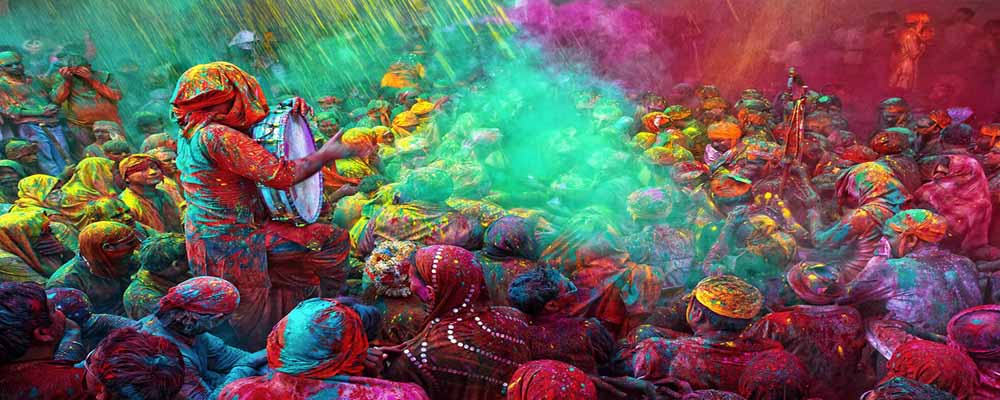
Jyotirlinga temples are not only important pilgrimage sites for devotees of Lord Shiva, but they are also known for their vibrant and colorful festivals that are celebrated throughout the year. Here are some of the famous festivals celebrated at Jyotirlinga temples:
Mahashivratri: Mahashivratri is one of the most important festivals celebrated at all Jyotirlinga temples. It is celebrated on the 14th day of the Hindu month of Phalguna (February-March), and devotees fast and offer prayers to Lord Shiva throughout the day and night. The festival is believed to commemorate the wedding of Lord Shiva and Goddess Parvati, and is considered to be a very auspicious day for devotees.
Shravan Month: The month of Shravan (July-August) is considered to be a very holy month for devotees of Lord Shiva, and is celebrated with great fervor at Jyotirlinga temples. Devotees observe a month-long fast during this period, and offer prayers to Lord Shiva by visiting the temples and performing various rituals and offerings.
Other Festivals Celebrated at Jyotirlinga Temples: Apart from Mahashivratri and Shravan month, there are several other festivals that are celebrated at Jyotirlinga temples throughout the year. Some of these festivals include Diwali, Navratri, Holi, and Janmashtami, among others. These festivals are celebrated with great enthusiasm and devotion, and offer a glimpse into the rich cultural and religious heritage of India.
Jyotirlinga Temples: Preservation and Conservation
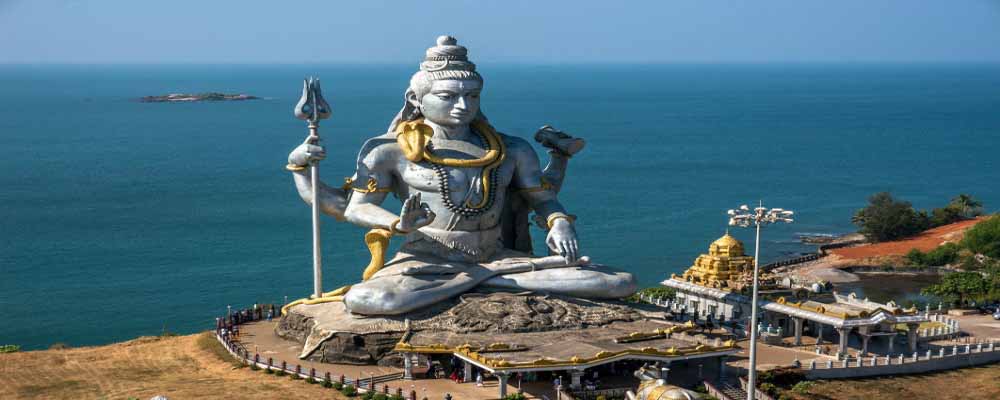
Jyotirlinga temples are not only important pilgrimage sites for devotees, but they are also significant from a historical and cultural perspective. These temples are known for their unique architecture, intricate carvings, and rich history. However, over the years, these temples have faced several challenges in terms of preservation and conservation. Here’s a look at some of the initiatives taken and challenges faced in the preservation and conservation of Jyotirlinga temples:
Initiatives Taken for Preservation and Conservation of Jyotirlinga Temples
Several initiatives have been taken over the years to preserve and conserve Jyotirlinga temples. The Archaeological Survey of India (ASI) has taken up the task of conserving these temples and ensuring that their historical and cultural significance is preserved. The ASI has undertaken restoration work on several Jyotirlinga temples, including the Somnath Temple in Gujarat, the Kedarnath Temple in Uttarakhand, and the Mahakaleshwar Temple in Madhya Pradesh, among others.
Challenges Faced in Preservation and Conservation of Jyotirlinga Temples
One of the biggest challenges faced in the preservation and conservation of Jyotirlinga temples is the issue of wear and tear caused by the large number of devotees who visit these temples. The constant flow of people can cause damage to the structures, which can be difficult to repair. Additionally, natural disasters like floods, earthquakes, and cyclones can also cause significant damage to these temples. Another challenge is the lack of funds and resources available for preservation and conservation efforts.
Importance of Preservation and Conservation of Jyotirlinga Temples
The preservation and conservation of Jyotirlinga temples is important for several reasons. Firstly, these temples are significant from a historical and cultural perspective, and represent an important part of India’s rich heritage. Secondly, they are important pilgrimage sites for devotees of Lord Shiva, who come from all over the world to seek blessings at these temples. Lastly, the preservation and conservation of these temples is important for future generations, who should have the opportunity to appreciate and learn from these important cultural landmarks.
Conclusion

Jyotirlinga temples are a group of twelve temples dedicated to Lord Shiva, and are considered to be the most sacred and important pilgrimage sites for Shaivites. Each of the twelve Jyotirlinga temples is associated with a unique legend and mythological significance.
These temples are not only important from a spiritual perspective but also have significant historical and cultural significance. They represent an important part of India’s rich heritage and attract devotees from all over the world.
The significance of Jyotirlinga temples in one’s spiritual journey lies in the belief that visiting these temples and seeking the blessings of Lord Shiva can bring about spiritual transformation and inner peace. It is believed that by visiting these temples, one can attain moksha or liberation from the cycle of birth and death.
In addition to their spiritual significance, Jyotirlinga temples are also known for their unique architecture, intricate carvings, and rich history. The preservation and conservation of these temples are crucial tasks that require the support and involvement of the government, local communities, and devotees.
In conclusion, Jyotirlinga temples hold immense significance in the spiritual journey of a devotee, and visiting these temples can bring about spiritual transformation and inner peace. It is important to preserve and conserve these temples so that future generations can appreciate and learn from these important cultural landmarks.
FAQs About 12 Jyotirlinga Temples
Where are the 12 Jyotirlingas located?
Somnath Temple in Gujarat, Mallikarjuna Temple in Andhra Pradesh, Mahakaleshwar Temple in Madhya Pradesh, Omkareshwar Temple in Madhya Pradesh, Kedarnath Temple in Uttarakhand, Bhimashankar Temple in Maharashtra, Vishwanath Temple in Uttar Pradesh, Trimbakeshwar Temple in Maharashtra, Vaidyanath Temple in Jharkhand, Nageshwar Temple in Gujarat, Rameshwaram Temple in Tamil Nadu, Grishneshwar Temple in Maharashtra
Which is the 1st Jyotirlinga?
The first Jyotirlinga is Somnath Temple located in Gujarat. It is believed to have been built by the Moon God himself after Lord Shiva cured him of his illness.
Which is the most powerful Jyotirlinga?
There is no one Jyotirlinga that is considered more powerful than the others. Each Jyotirlinga is believed to have its own unique power and significance.
How to complete 12 jyotirlinga yatra?
To complete the 12 Jyotirlinga Yatra, one can plan a route that covers all 12 temples, starting from Somnath Temple in Gujarat and ending at Grishneshwar Temple in Maharashtra. The journey can be done by road, train or air, depending on the preferences and convenience of the traveler.
Which are the 7 Shivling in India?
Kedarnath, Vishwanath, Mahakaleshwar, Omkareshwar, Vaidyanath, Nageshwar, Somnath

